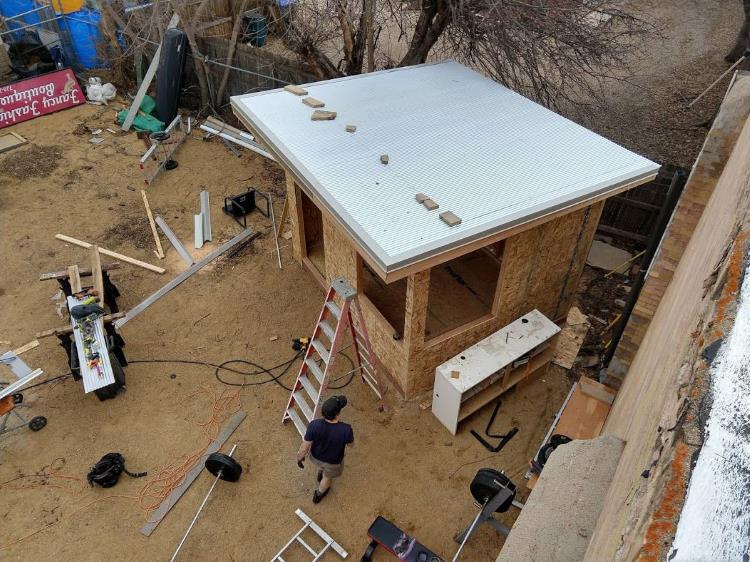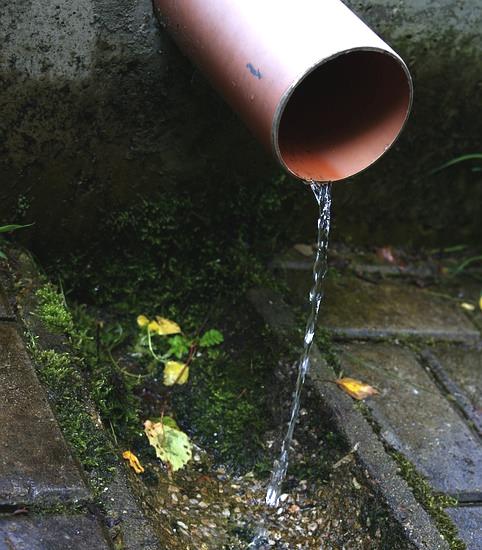Blog

Tiny Home Roof Repair Tips From the Experts
When you discover damage to the roof of your tiny home, it is vital you act fast to ensure the damage does not worsen which would cost you more time and money. By following these repair tips, you can fix the damage on your tiny house roof more easily and learn how to prevent it from happening in the first place.
The Importance Of A Roof

The roofing system of your tiny house plays a crucial role in retaining heat, increasing energy efficiency, keeping water out, air ventilation, and physical protection of the inside of your home from various other factors. Home improvement is something homeowners should take seriously and invest in.
- Water: Water can obviously cause a lot of direct damage, but even excess moisture in the air can cause problems within your home, such as mold, so it is important to manage.
- Heat retention: Having an air-tight roof will improve the efficiency of your home because less heat will escape, so you won’t spend as much on heating your living space in the winter months. Air-tightness will also stop moisture in the air from entering.
- Ventilation: whilst having an air-tight roof can be important, a vented roof will encourage natural airflow which can dry moisture.
An unvented roof is a more modern approach and allows you to use more roof space for things like storage, which is important in your tiny house. These days, we can ensure a roof that is fully sealed which won’t allow any air in, so it is becoming more common to use.
Prevention Of Damage
Whilst it is great to know how to fix a problem, it is better to be able to prevent it from happening in the first place or occurring again and again. There are a variety of issues that can cause a fault in your roof, so ensure you frequently check and take action on the following.
Prevent Mould
Mold is a fungus that feeds off organic material, such as wood on your roof. This can decompose and weaken the structural integrity of your roof. Prevent mold by limiting moisture in your home by ensuring it is well-ventilated and build-ups of moisture are avoided. This can include opening windows, turning on the fan when you have a shower and
Keep Animals Out
Nesting birds and animals looking for bugs to feed on can cause them to work their way into your roof by tearing up your roof. You can find affordable and durable shingles that won’t be as easily damaged because of their impact-resistant properties. If a single shingle is damaged, a single one can be easily replaced and installed.
Replace Damaged Materials
As soon as you notice any wear and tear in your roof, such as cracked shingles or missing tiles, it’s important to replace these as soon as you can. This is because water can more easily enter the roof space which can cause a range of problems, not just the occasional dripping of water on your head when it rains.
Check Surroundings
Try to check the surroundings of your house to see if there are things like weakened trees that could fall on your home. It’s a good idea to do this after a storm or strong winds which may have damaged a tree branch.
Clean Out Gutters
Debris can pile up in your gutters which prevents water from draining properly. This can cause water to leak into your roof and cause problems such as rot. The angle of your roof is also important for rainwater run-off, so look into whether that is causing issues for you.
Prevent Ice Dams
Without taking proper precautions, you may develop ice dams on your roof. These are icicles that form when water runs down the roof (often snow melt) and refreezes on the edge; this normally occurs because parts of the roof are warmer, but the edges remain below freezing. This creates a rim of ice that can trap more water behind it, creating a dam, where the excess water builds up and works its way under shingles.
You can prevent ice dams by ensuring your roof is air-tight by sealing gaps with foam, or by increasing insulation in your roof space. Alternatively, you can opt for increasing ventilation; this draws in cold air and flushes out warm air from the attic, which cools the roof space down and evens out the temperature.
Type Of Roof

With a tiny home, there are many roofing options when it comes to roofing materials. This includes flat rubber, asphalt shingles, metal roofs, shingle roofs, thatched, and green. Each of these will have pros and cons, with different maintenance requirements, aesthetics, and sustainability. There are several types of roofs, such as flat roofs and gable roofs, and the roof pitch varies between each. Depending on the climate, some roof styles are more efficient and long-lasting. Whatever option you have should be high-quality to ensure water cannot enter, otherwise, it’s going to cause you a lot of options and you may end up having to replace or make a new roof.
Tips For Finding A Leak

What Are The Signs Of A Leak?
Leaks, caused by things like damaged shingles and ice dams, are usually made obvious by water stains along ceilings or walls. You may also notice peeling paint, rusting metal objects (such as drywall fasteners), mold, and sagging sheetrock.
How Do I Track Down The Leak?
Firstly, look slightly uphill at where the inside damage is when you’re on the roof. Look for damaged shingles, and any penetrations in the roof (including vents, plumbing, and chimneys). The damaged area may not seem to directly correlate to the leak inside because the water may travel through the roof space before reaching the inside of the home.
- Use a hose: If you cannot find the origin of the leak, use a hose to soak certain spots for at least 10 minutes and grab someone to check for water inside. Systematically work your way around the roof until you find the place the water is entering.
- Look under shingles: You may find you have to pull out shingles to inspect under them if the hose method does not work. Look for discolorings on felt paper, and water stains or rot on the wood.
- Look at joints: chimneys and vents areas are more prone to erosion so these should be one of the first spots to check.
The great thing about a tiny home is that it’s tiny. Finding a leak will be much easier than if you had a large roof where you need to inspect each square foot, so this should save you a lot of time and frustration!
Tips For Fixing A Leak
Most of the fixes are DIY so you don’t need expensive tools or materials, but have a handyman or a roofing contractor with experienced roofers available in case the leaks are worse than they seem.
Remove Shiners
Shiners are nails that were not nailed in the correct place. Instead of into the roof framing, they missed and you will be able to see a nail poking through. Water can condense on these nails and frost up on cold nights, and then melts when it is warmer, causing a small drip/leak. Simply cut these nails to stop this from happening.
Complete The Vapor Barrier
There will often be a vapor barrier (a waterproof, plastic sheet) between the drywall and the insulation, but water may escape through if there is a tear. Attach some more waterproofing if there are any gaps – this is often around lights, where there has to be a gap to allow electricals through.
Problems With Plumbing Vent Boots And Vents
Vent boots cover pipes that stick out your roof and may be cracked or rotted, in which case you should buy a new one. Or, the problem may lie with the base of the vent with loose or missing nails. Remove any nails by driving a flat bar under the nails to pop them out, and then replace them with high-quality, rubber-washer screws. The same goes for the vent itself.
Seal Dormers
If your tiny home has leaking dormers, then check for cracked and missing caulk around the edges. Do not just look though, have a dig around to make sure it is properly sealed, and dig out the remaining sealant if it is not. Use high-quality caulk to reseal the areas – this will save you from having to replace it frequently because it will be sturdier and more effective, saving you money in the long run.
Waterproofing The Soffit
For ice dam leaks that cannot be prevented by improving ventilation, you can work on waterproofing the area. Remove the shingles, then slip a sheet of adhesive waterproofing under the main soffit/roof joint. Continue to overlap the waterproof strips along the roof edge, then replace the shingles. Also, slide metal step flashing behind the trim of the gutter. Consider using a heat cable along the roof edge if you continue to have problems.
NB: Caulk Is Not Always The Right Fix
You may be tempted to use caulk in a lot of cases when it comes to repairing your roof. Caulk can be a good temporary fix while you find replacement parts, but it should not be relied on as a permanent solution for everything. Sometimes, there is a higher-quality and more effective alternative.
All in all, water is your worst enemy, and repairing your roof installation is vital in keeping it out. Preventing problems in your small house is easier than fixing them, but if you do find there is a leak in your house then there are ways of fixing it. Ensure shingles and vents are replaced if they’re damaged and work to ensure the roofing system is properly waterproofed and sealed.